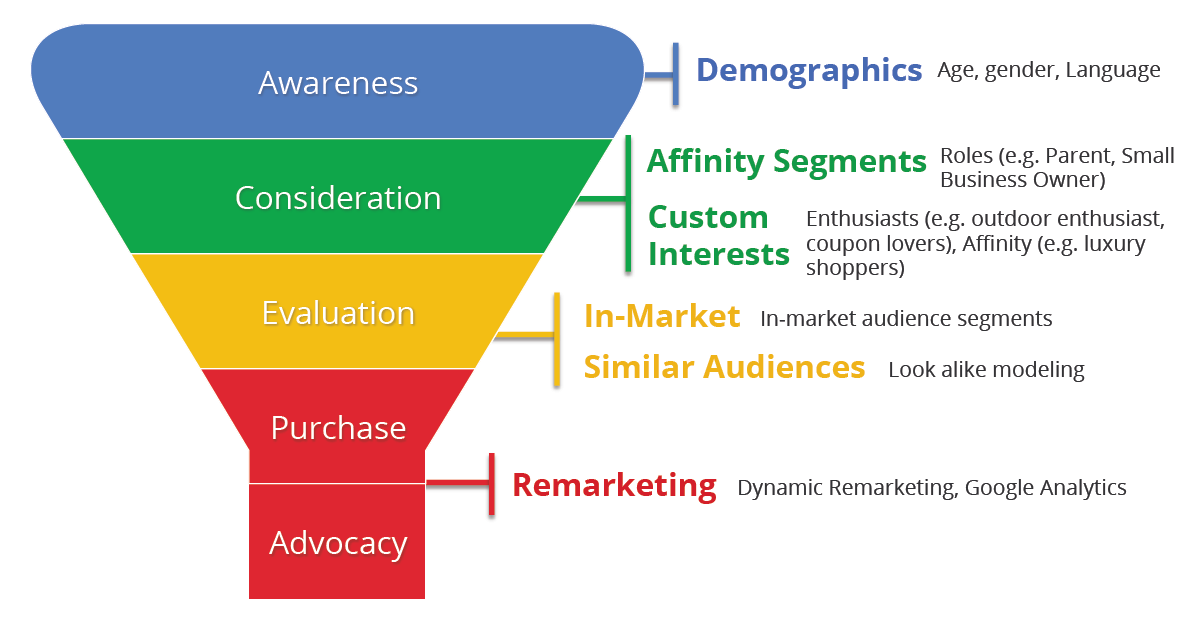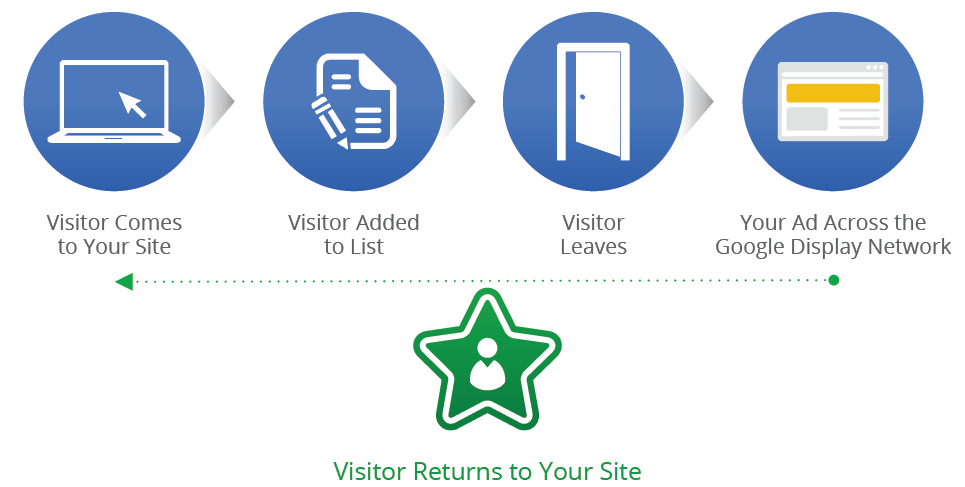The Google AdWords platform makes available to advertisers an extended range of targeting solutions of websites and/or visitors on the GDN. These solutions make the GDN appropriate for the communication of all business types, ranging from SME’s to multinationals. This network can help advertisers generate brand awareness as well as increase sales.
Let’s discover the different targeting methods and their potential uses.

Demographics
Google observes the navigation historic of the internet users to infer their age and gender (click here to know who Google thinks you are!). Even if the classification is not fully exact, the demographic targeting allows advertisers to reach a very broad audience. It is appropriate to advertising campaigns whose main objective is to increase a brand/product awareness. Furthermore, the demographic targeting can be combined with other targeting methods to obtain more precise audiences.
Affinities & Interests
Much like demographic targeting, the interests/affinities targeting is based on the internet users' profile, and not the website content. According to our experience, the interests targeting gives positive results. The click-through-rate is above the average of the GDN because the targeted audience is supposed to be already interested in the type of product/service presented. The use of this solution is ideal when the advertiser objective is to push the visitors to consider his brand/company (branding & awareness objectives).
Besides, we noticed that some interests allow touching a much bigger amount of users than others. This is logically explained by the fact that some activities/researches are more often done on the web. For example, the interests “online gaming” and “news” include many more users than “poetry” and “pets”. Important to note though: even if many persons are interested in pets, the interest “pets” will probably generate fewer impressions than “news” because people rarely express it online.
Since recently, it is possible to know in Google Analytics (tab: Audience) which interests or affinities are associated to your website visitors. This information is useful to define the audiences that you want to target on the Google Display Network.

Topics & Contextual
The contextual and topics targeting is based on the websites content on which the banners could appear (no more on the users profile such as the demo and interests targeting). Google scans the content of each webpage and attributes it a theme. The banners will then appear on the website pages whose theme matches the selected topics or the keywords list created in Google AdWords.
This type of targeting allows controlling more precisely where the banners appear on the GDN but it shows generally a click-through-rate lower than the interests targeting. Furthermore, the combination of these two methods turns out to be a qualitative targeting solution but the reach is often limited. We recommend using the topics and contextual targeting for campaigns limited by budged and whose objectives are to increase conversions.
Remarketing & Similar Audiences
The Remarketing targeting allows you to target internet users who have already visited your website. The Remarketing channel is powerful and directly generates conversions.
Google AdWords and Google Analytics provide a high flexibility in the definition of the Remarketing audiences. Consequently, Remarketing can be used in many different ways. First, you can show banner ads to high potential visitors (i.e.: people who have abandoned their cart before the end of the buying process). Secondly, it is possible to combine Remarketing audiences in negative with others targeting methods. For example, to avoid to reach our current users when the campaign objective to increase the clients base. Finally, Google automatically creates audiences of users whose profiles are similar to the Remarketing audiences. Thanks to similar audiences, it is easy to find new users presenting the same characteristics as our clients on the Google Display Network.

To conclude, find here some additional best practices to use these targeting solutions at their maximum potential.
- Preferably do not mix Search and Display in the same campaign.
- Create one campaign per country and per language.
- Separate the audiences you want to target in different adgroups.
- Test different combinations of the targeting solutions and only keep the best performing ones.
- Isolate the high performing placements in an adgroup to better control the bid.
![]() written by Chloé Piérard
written by Chloé Piérard


